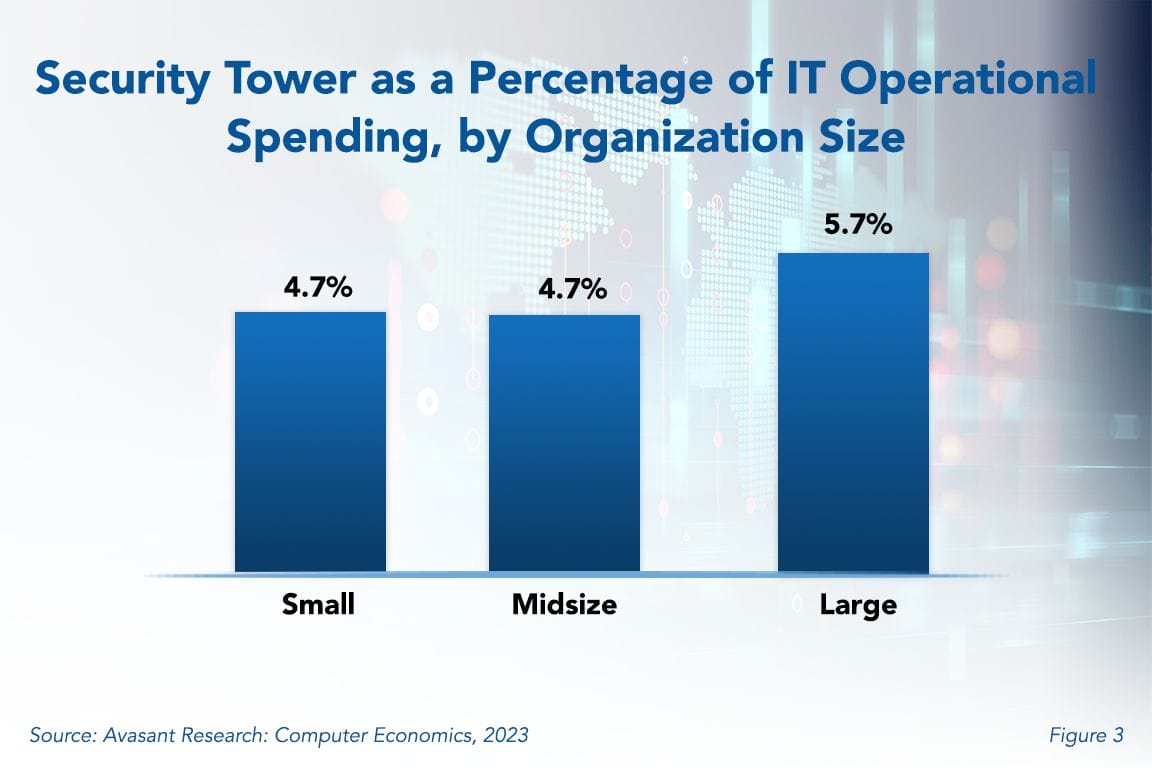Security and cybersecurity incidents are costly, with losses increasing every year. For example, in 2022 the FBI Internet Crime Report showed losses in excess of $10 billion due to internet crime, up from $3.5 billion in 2019. Although these losses are staggering, they are almost certainly the tip of the iceberg. They only reflect losses that are reported to the FBI, and many victims—whether individuals or businesses—choose not to file complaints or report losses. Moreover, the FBI data does not include certain types of losses, such as ransomware payments.
In addition to direct costs, victims often suffer indirect costs, such as revenue losses due to downtime, reputation or brand damage, and loss of trade secrets or intellectual property. These can easily exceed the level of direct costs.
In light of these growing threats, it is no wonder that organizations in all industries continually rank security as a top priority for new spending. But how much are they spending? To answer this question, we have released our new report, IT Security, Cybersecurity, and Compliance Spending Benchmarks. (Click the button above to download free sample pages, or buy the full report now.)
As shown in Figure 3 from the full report, small and midsize organizations allocate 4.7% of their IT operational spending to the security tower. This metric rises to 5.7% for large organizations. Comparing this large-organization metric against the small and midsize metric shows that large organizations on average spend about 21% more on security than smaller organizations.
Small organizations are defined as those with less than $5 million in IT operational spending, while large organizations spend over $25 million, and midsize organizations fall in the middle.
What Are the Costs Included in the Security Tower?
The security spending tower includes all IT security, cybersecurity, and security-related compliance spending. It includes:
-
- Security personnel costs (both internal and external personnel)
- Security hardware
- Security software
- Outside security services
- The security spending tower also includes depreciation of security capital investments in the past. It does not include current-year security capital spending.
The full report provides business and IT leaders with guidance for how much they should be spending on security as well as insights on where security and cybersecurity spending should be allocated. We provide benchmarks by industry and organization size for IT security, cybersecurity, and related compliance spending and staffing.
What Are the Security and Cybersecurity Spending and Staffing Metrics?
Security spending benchmarks are calculated across a number of units, including:
-
- Number of users
- Organization revenue
- IT operational spending
- Number of network devices
- Number of network locations
- Number of endpoints.
Security staffing metrics are calculated as a percentage of the IT staff and also per user. Industry benchmarks are provided for business services, financial services, critical infrastructure, public sector, healthcare, manufacturing/distribution, and retail.
We also include a breakdown of security and cybersecurity spending by major category, including
-
- Identity and access management
- Security policy and awareness
- Cybersecurity and incident response
- Threat and vulnerability management
- Data privacy and security
- Governance, risk, and compliance (GRC).
We conclude with guidelines for benchmarking your IT security, cybersecurity, and compliance spending.
Download sample pages by clicking the button at the top of this page, or purchase the full report now.


